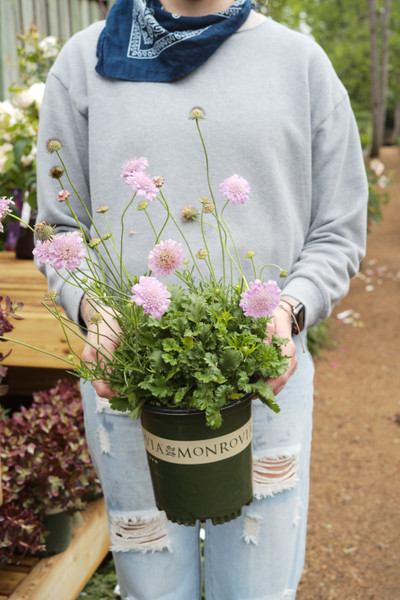Scabiosa
Posted by Aaron Barton on Mar 4th 2023
Scabiosa (Pincushion Flower)
The pursuit of consistent, lasting color is one of the most enjoyable challenges to tackle in perennial gardening, with carefree, long-lasting bloomers like Scabiosa helping to keep landscapes bursting with color all season long. Belonging to the honeysuckle family, Caprifoliaceae, Scabiosa (skab-ee-OH-suh), known as pincushion flower after its mounds of prominent pin-like stamens, is excellent for creating large swaths of persistent color in the garden.
Native to regions of Africa, Europe, and Asia, most popular garden cultivars of pincushion flower are derived from the dwarf pincushion flower, S. columbaria. Carefree, resistant to deer and rabbit feeding, and drought tolerant once established, pincushion flower is a fantastic addition to rock gardens, Mediterranean style gardens, and low sunny borders. Scabiosa is also excellent as a cut flower and is great for creating impactful texture and color in mass plantings.
Scabiosa begin to bloom in mid-spring, sending up numerous one- to three-inch-wide blooms high above the foliage atop stiff wiry peduncles, serving as fantastic sources of nectar for pollinators, especially butterflies and moths. Each bloom consists of numerous small florets with four protruding stamens each, contributing to their signature pincushion-like appearance. Scabiosa benefit from regular deadheading and will continue to rebloom throughout the entirety of the season with regular maintenance for continued color, or alternatively spent blooms can be left for unique interest.
Blooms sit above deeply lobed, fuzzy blue-green foliage, forming compact mounds 12-18” tall and wide. Numerous excellent cultivars are available, including the classic violet-blue, abundant blooms and exceptional mildew resistance of ‘Vivid Violet,’ large, soft blue blooms of ‘Giga Blue,’ and large pink blooms of ‘Giga Pink.’
Plant Scabiosa in occasionally moist, sharp draining soils in full sun, and avoid excessively moist areas or areas with poor drainage, as pincushion flower is prone to root rot, especially when dormant.
Happy planting!

